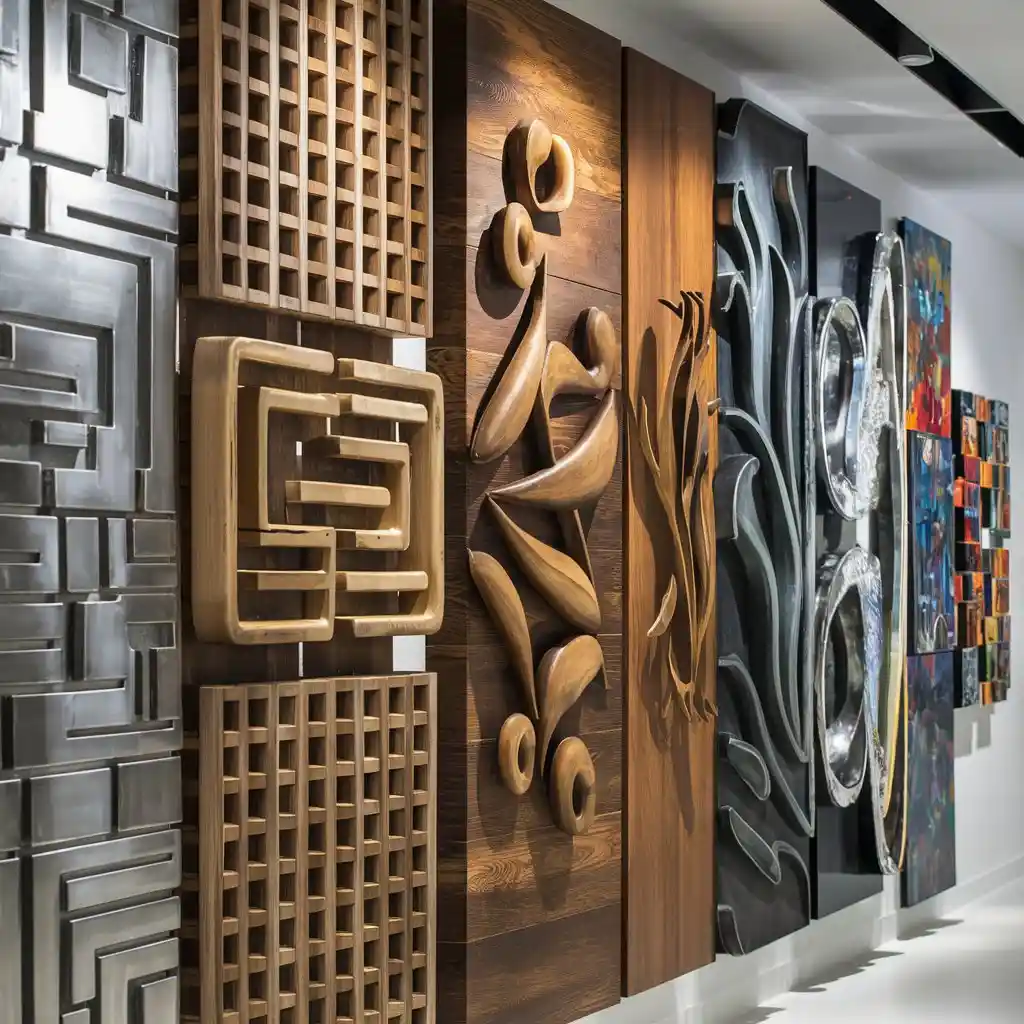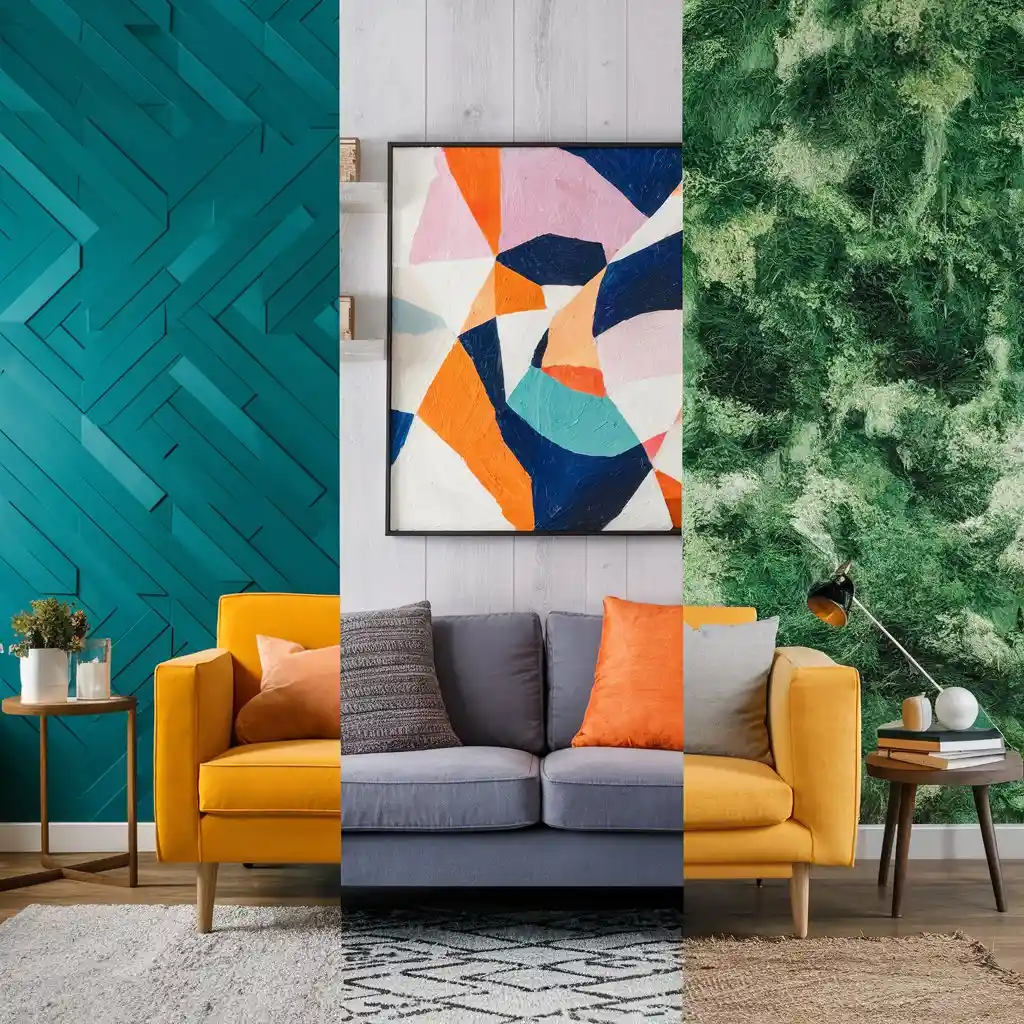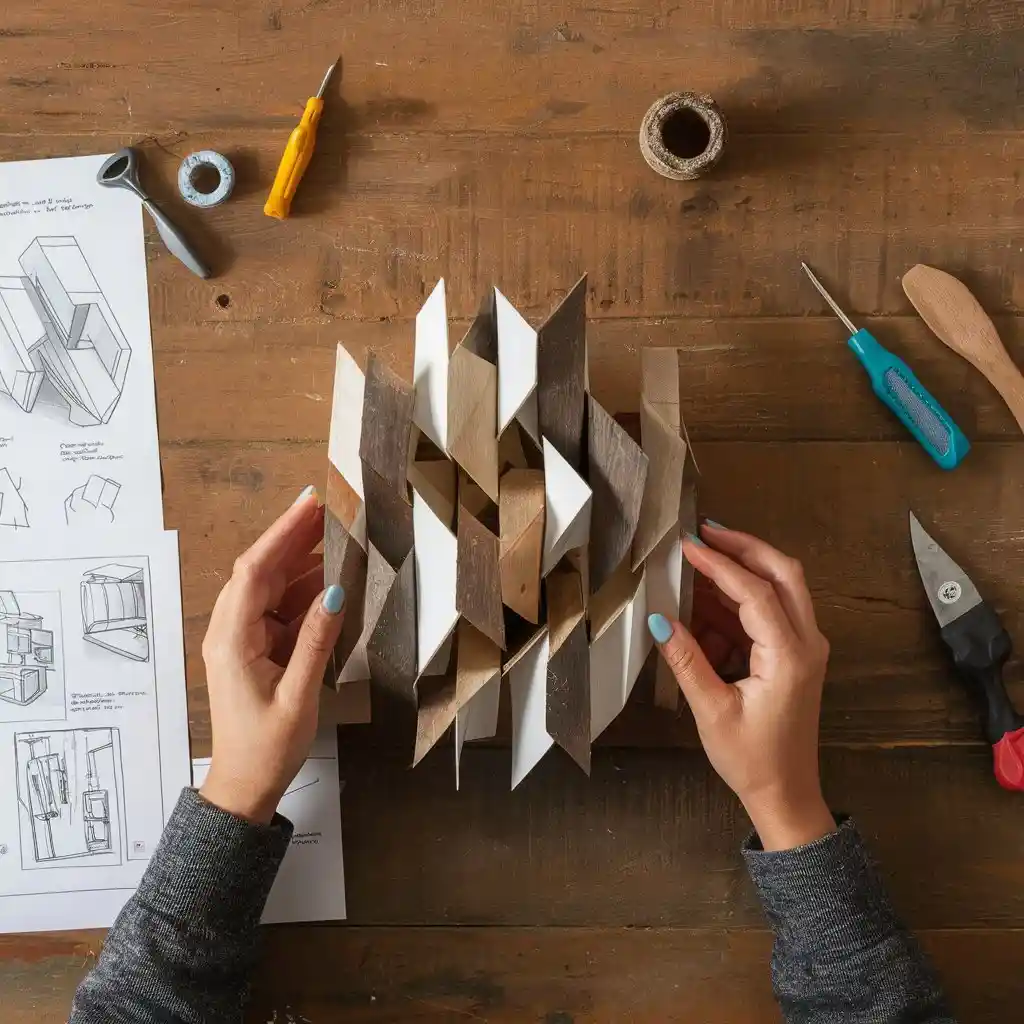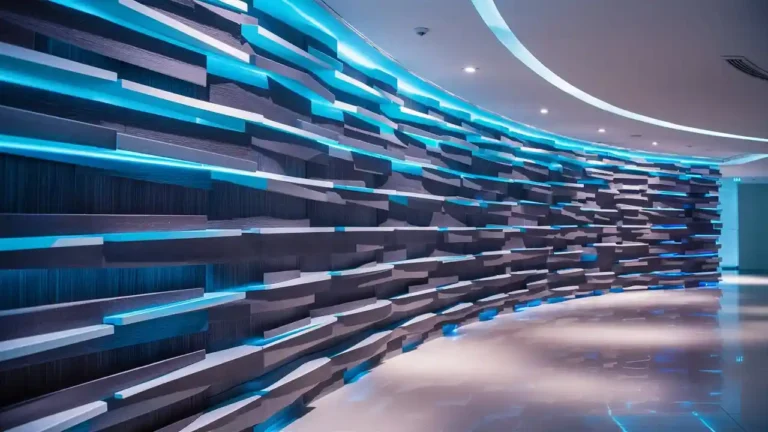Imagine walking into your home and being captivated by art that seems to leap off the wall. With 3D wall art, ordinary flat surfaces transform into extraordinary visual experiences that add depth, texture, and character to any room. Whether you’re a design enthusiast, a DIY lover, or simply someone looking to refresh your décor, this comprehensive guide to 3D wall art is designed for you. In the following pages, you’ll discover what 3D wall art is, explore various styles and trends, learn how to incorporate it into your space, and gather practical tips and resources to kickstart your creative journey—all while boosting your home’s aesthetic appeal and value.
Table of Contents
Introduction
Your living space is a canvas just waiting for transformation. 3D wall art offers you a unique opportunity to revitalize your interiors by introducing elements that play with perspective and create illusionary depth. No longer are walls merely a backdrop; with 3D wall art, they become dynamic focal points that blend function with high-impact design.
In today’s design landscape, 3D wall art is more popular than ever. It is frequently featured in modern living rooms, bedrooms, offices, and even outdoor spaces. From modern, abstract masterpieces to nature-inspired installations, the options are as diverse as your personal style. In this guide, you will explore various materials, techniques, and trends that will help you harness the creative potential of 3D wall art. Whether you want to create a striking accent wall in your living room or add artistic flair to a small space, our guide provides you with the inspiration and practical advice to make it happen.
What Is 3D Wall Art?
Defining 3D Wall Art
3D wall art refers to decorative pieces that introduce a third dimension to your walls by using sculptural elements, relief techniques, and textured materials. Unlike traditional flat paintings or prints, 3D wall art creates an illusion of depth and movement. It is often made from various materials such as metal, wood, resin, and mixed media to produce designs that appear to protrude or recede, offering a tactile experience.
When we speak of 3D Wall Art, we also encompass related terms like Dimensional Wall Decor, Sculptural Wall Art, and Textured Wall Panels. These variations highlight the versatile nature of 3D art, which can range from handcrafted sculptures to digitally fabricated installations.
Materials and Techniques

The materials you choose for your 3D wall art are crucial in determining its impact and longevity. Some common materials include:
- Metal: Provides a sleek, industrial finish. Metal 3D wall art is often characterized by its contemporary look and durability.
- Wood: Offers warmth and natural texture. Wooden 3D wall art can be carved or layered to produce varying degrees of depth.
- Resin and Mixed Media: Allow for the creation of intricate, customized pieces that integrate different textures and colors.
Techniques used in creating these artworks include:
- Handcrafting: Traditional methods of cutting, carving, and assembling materials to create unique, artisanal pieces.
- Digital Fabrication: Using design software to plan and visualize your project before fabrication. Tools like 3D printers or CNC machines can then be used to build your design.
- Modular Panels: Pre-fabricated panels that can be arranged in customizable ways to form a cohesive visual narrative on your wall.
These material choices and techniques provide endless opportunities for customization, ensuring that your 3D wall art truly reflects your personal style.
Styles and Trends in 3D Wall Art


The world of 3D wall art is diverse, and current trends reflect a mix of bold innovation and timeless aesthetic principles.
Popular Styles
Modern 3D Wall Art
Modern 3D wall art is characterized by clean lines, geometric patterns, and a minimalist color palette. This style is perfect for creating a sophisticated, contemporary look:
- Neutral Colors: Whites, grays, and blacks form a clean backdrop.
- Geometric Designs: Sharp angles and precise patterns emphasize structure.
- Industrial Elements: Use of metal and glossy finishes can evoke an urban vibe.
Abstract 3D Wall Art
For those who prefer the unconventional, abstract 3D wall art offers expressive, non-representational designs:
- Fluid Shapes: Non-linear forms that create a sense of movement.
- Bold Textures: Layers of mixed media produce a tactile, dynamic effect.
- Vibrant Accents: Splashes of color against contrasting backgrounds add visual intrigue.
Nature-Inspired 3D Wall Art
Nature-inspired designs bring the outside in, offering organic forms and earthy textures:
- Motifs of Trees and Flowers: Sculptural representations of natural elements.
- Use of Natural Materials: Wood, stone, and recycled materials create an eco-friendly aesthetic.
- Organic Patterns: Flowing, asymmetrical designs that mimic natural landscapes.
Industrial & LED-Lit 3D Wall Art
Combining industrial materials with modern lighting techniques, this style creates dramatic, eye-catching installations:
- Metallic Finishes: Brushed, polished, or matte metal surfaces.
- LED Integration: Built-in LED lighting adds depth and drama.
- Bold Structure: Clear, defined shapes that command attention.
Current Trends for 2025
Looking forward to 2025, several trends are emerging in the field of 3D wall art:
- LED-Lit Sculptures: Incorporating LED lights to enhance visibility and create dynamic visual effects.
- Eco-Friendly Materials: An increasing focus on sustainability with recycled, biodegradable, or natural materials.
- Customizable & Modular Designs: Modular panels that can be reconfigured allow for a personalized touch.
- Interactive Elements: 3D art that invites interaction through tactile surfaces or integrated technology.
- Abstract and Geometric Fusions: Combining abstract art with geometric precision for an avant-garde look.
These trends not only push the boundaries of design but also align with broader movements toward sustainability and interactivity in interior design.
How to Incorporate 3D Wall Art in Your Home
Decorating Different Spaces
Living Room 3D Wall Art
Transform your living room into a dynamic, conversation-starting space:
- Focal Points: Choose a large 3D panel or installation as the room’s centerpiece.
- Complementary Furniture: Ensure that your furniture and decor enhance the artwork without competing for attention.
- Lighting: Employ accent lights to bring out the sculpture’s depth and intricate textures.
Bedroom 3D Wall Art Ideas
Add depth and character to your bedroom:
- Serenity: Choose nature-inspired or abstract designs that evoke a tranquil atmosphere.
- Accent Walls: Use 3D wall art to create a textured accent wall behind the bed, providing a visually stimulating backdrop.
- Balance: Simplify surrounding elements so that the art remains the centerpiece.
Office and Commercial Spaces
Make a lasting impression in professional environments:
- Dynamic Ambiance: Incorporate interactive or LED-lit 3D wall art to create a modern, high-energy workspace.
- Brand Integration: Custom designs can reflect company values and brand colors.
- Functionality: Ensure that the art enhances the space without interfering with daily operations.
DIY and Budget-Friendly Projects
For those who love a hands-on approach, DIY 3D wall art is an exciting option:
- Step-by-Step Projects: Start with smaller DIY projects, such as creating a wooden 3D panel or upcycling discarded materials.
- Material Selection: Explore affordable options like recycled wood, inexpensive metal sheets, or even resin.
- Customization: Personalize your project with unique patterns, textures, and finishes. Consider integrating your favorite colors or motifs.
Here’s a quick DIY process:
- Plan Your Design: Sketch out your idea and list the required materials.
- Gather and Organize Materials: Sort your tools and supplies, ensuring you have everything on hand.
- Build in Sections: Assemble your piece step-by-step, testing each section for stability and coherence.
- Finish and Display: Once constructed, finish your piece with a protective sealant if needed and choose the perfect spot to display your creation.
These budget-friendly tips enable you to create stunning 3D wall art without breaking the bank while adding a personalized touch to your décor.
Tools, Resources, and Expert Tips

Essential Tools for 3D Wall Art
To bring your creative vision to life, you’ll need the right set of tools:
- Brick Separators & Organization Tools: For projects involving LEGO or other building blocks, keep your materials sorted for efficient work.
- Precision Cutting Tools: Essential for cutting wood, metal, or other materials accurately.
- Adhesives and Fasteners: Use specialized adhesives or mechanical fasteners to secure your materials and maintain stability.
- Digital Design Software: Programs like BrickLink Studio for LEGO projects or CAD software for custom 3D wall art designs can be invaluable in planning and visualizing your project before physical construction.
Resources and Communities
Explore these resources to further enhance your project:
- Online Marketplaces: Websites such as Etsy and specialized décor retailers offer a variety of handcrafted 3D wall art.
- Inspiration Websites and Blogs: Platforms like Houzz, Architectural Digest, and Design Milk regularly feature cutting-edge 3D wall art trends.
- Communities and Forums: Join groups dedicated to DIY art, sculptural design, or even LEGO art on social media and forums. Engaging with like-minded creators can provide invaluable feedback and inspiration.
- Local Workshops and Exhibitions: Attend local art exhibitions or DIY workshops that focus on wall art techniques, offering hands-on experience and networking opportunities.
By leveraging these tools and resources, you not only enhance your technical capability but also immerse yourself in a community of innovators, which can spark further creativity.
Frequently Asked Questions (FAQ)
What is 3D Wall Art and how does it enhance a space?
3D Wall Art adds depth and texture to your walls, transforming them from flat surfaces into dynamic, artistic focal points. It creates an illusion of space and movement, making your room feel more engaging and visually stimulating.
Which materials are best for creating custom 3D wall art?
Common materials include metal, wood, resin, and mixed media. Each material offers unique textures and finishes, allowing you to choose based on your design preference and the required durability of the installation.
How can I incorporate 3D Wall Art into my living room?
Choose a statement piece or a series of panels to serve as the focal point. Use complementary lighting, such as spotlights or LED strips, to highlight the art. Ensure that your furniture and other decor elements maintain a harmonious balance with the dynamic artwork.
What are some popular trends in 3D Wall Art for 2025?
Emerging trends include LED-lit installations, eco-friendly materials, customizable modular panels, and interactive designs that allow tactile engagement. Expect abstract designs with geometric precision and nature-inspired motifs to be popular.
Are there DIY options for creating 3D Wall Art?
Absolutely! You can start with affordable, DIY projects by upcycling wood or using recycled materials. Online tutorials and community forums offer step-by-step guides to help you build custom 3D wall art on a budget.
How do I maintain and clean my 3D Wall Art?
Maintenance varies by material. Generally, dust your piece regularly with a soft cloth. For metal or resin art, use a mild cleaning solution. Wooden pieces may require a special wood cleaner or wax for preservation.
Can 3D Wall Art be used outdoors?
Yes, if you choose weather-resistant materials like certain metals or treated wood. Ensure that the installation is secure and that you use outdoor-appropriate adhesives or fasteners. Always check the manufacturer’s instructions for material care when placing art outside.
What tools are essential for building 3D Wall Art?
Key tools include precision cutting instruments (saws, laser cutters, or CNC machines), adhesives, fasteners, and digital design software for planning. Organizing tools such as storage bins also help in efficiently managing your materials.
Conclusion
3D Wall Art offers you an extraordinary way to elevate your interior space. By transforming plain walls into dynamic, tactile masterpieces, you can create an environment that reflects both innovation and personal style. Whether you’re drawn to the minimalist elegance of modern designs, the vibrant texture of abstract sculptures, or the calming influence of nature-inspired installations, there is a 3D wall art solution out there that perfectly suits your needs.
You now have a comprehensive roadmap to dive into the world of 3D Wall Art—from understanding essential materials and techniques to discovering current trends and practical DIY tips. Embrace the opportunity to innovate, experiment, and transform your home décor. With the right tools, creativity, and a clear plan, you can create wall art that is not only visually stunning but also a true reflection of your personality.
Call-to-Action:
Are you ready to transform your space with dynamic 3D Wall Art? Start your project today! Share your creations and ideas in the comments below or join our online community to exchange tips and inspiration with fellow art enthusiasts. Don’t forget to subscribe to our newsletter for more expert guides and creative insights into the world of innovative wall décor.
By exploring these ideas and leveraging the techniques and resources outlined above, you’ll not only enhance your home’s aesthetics but also join a growing movement of creative design that challenges conventional boundaries. Transform your walls and let your unique style shine—your journey to spectacular 3D Wall Art begins now!


1 thought on “3D Wall Art – Transform Your Space with Dynamic Designs”